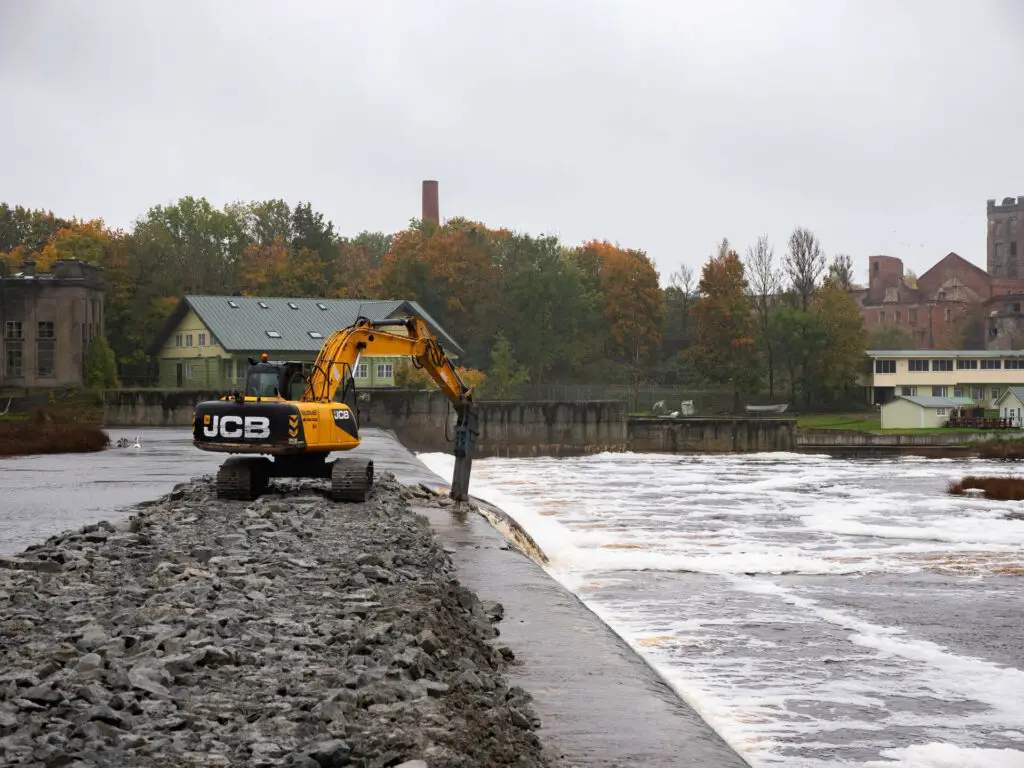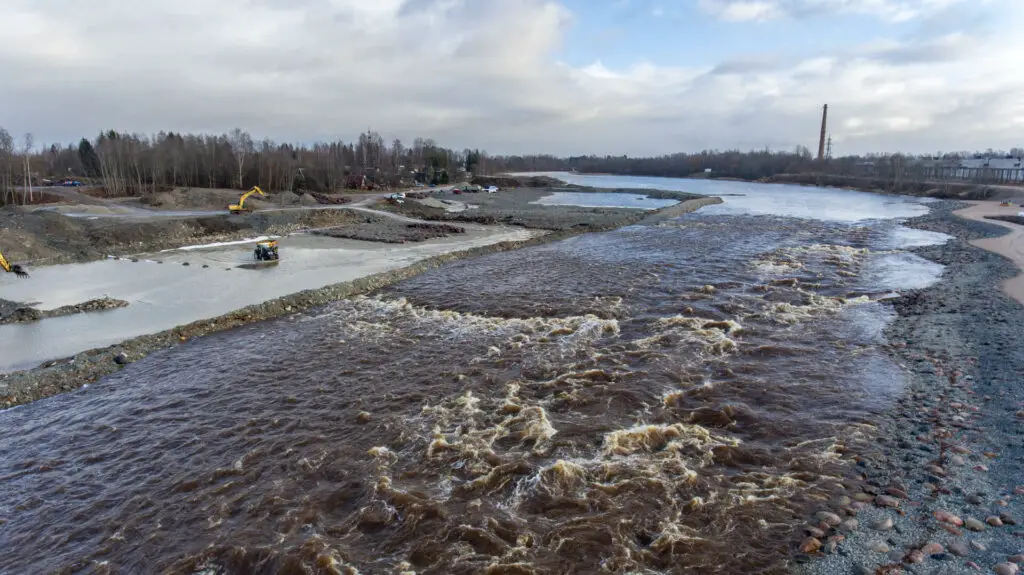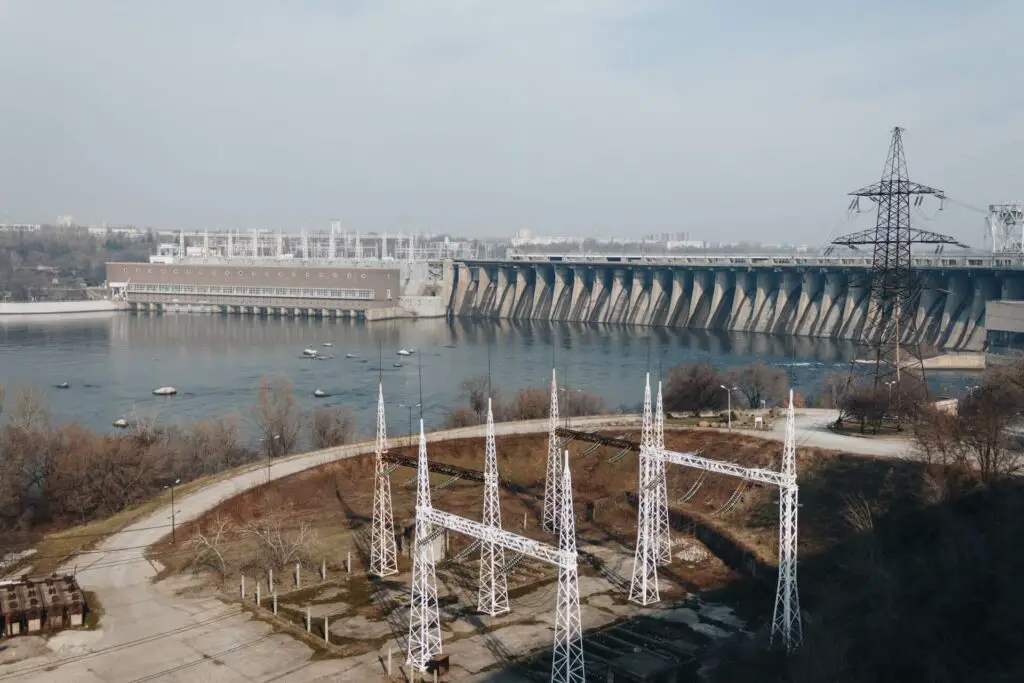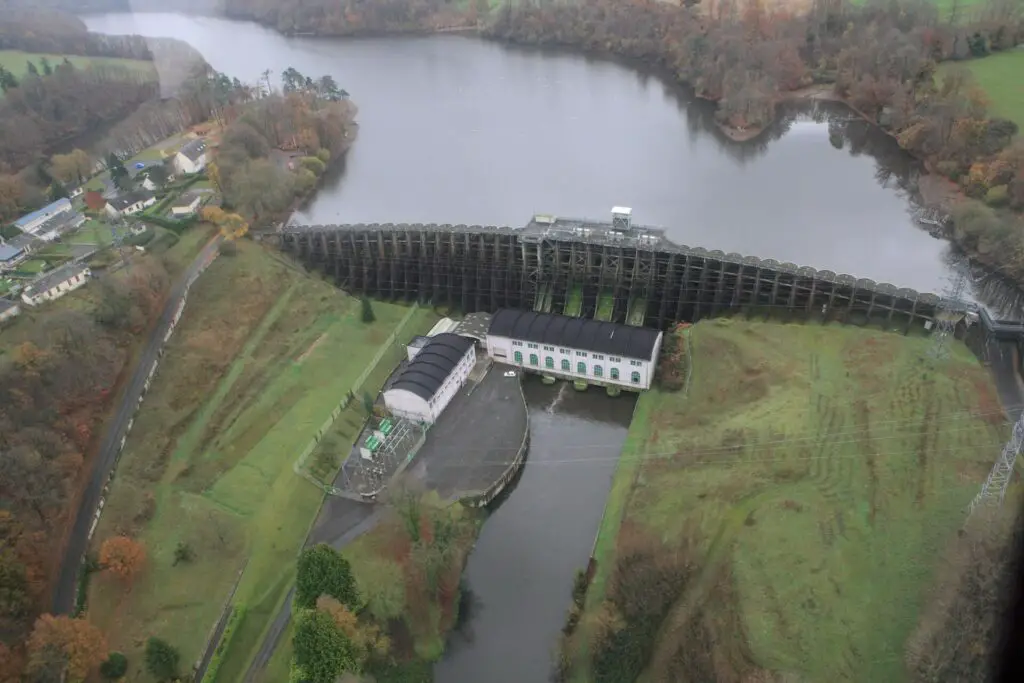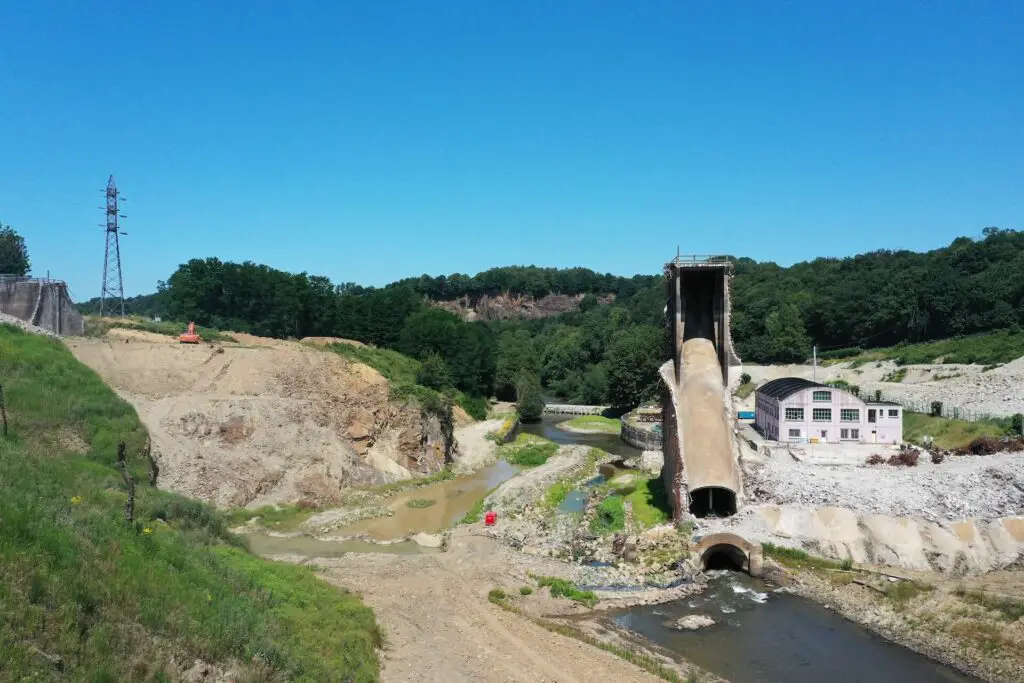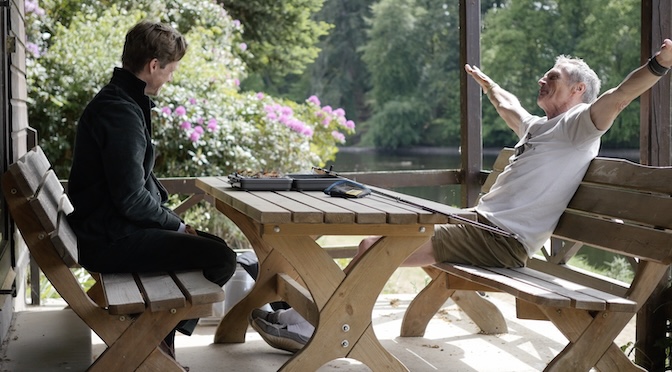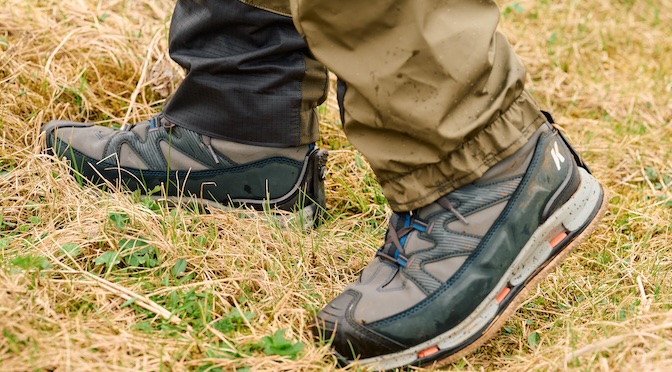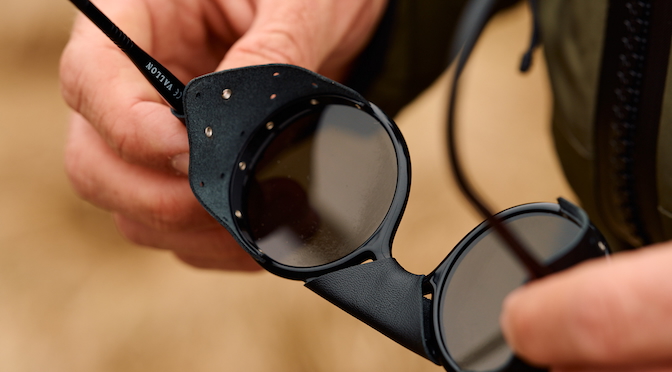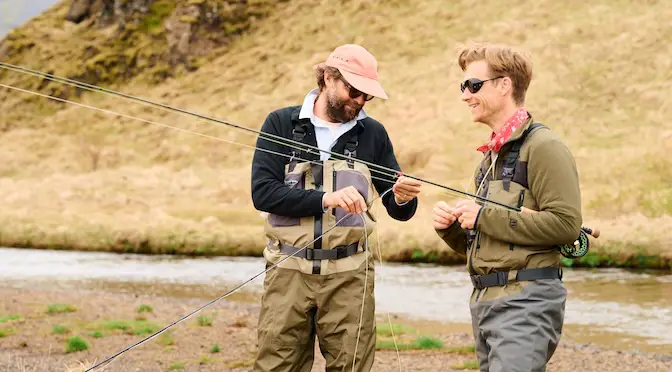Last updated on January 9th, 2024.
- Wading Wisdom #13 – Simon Gawesworth - July 7, 2025
- On the Water with the Korkers Bantam Lite - June 26, 2025
- How to Find Trout in Rivers & Streams Anywhere - June 13, 2025
No place on earth is as cluttered with dams as European rivers. We spoke with the World Fish Migration Foundation about removing these obstacles.
Herman Wanningen is the Creative Director of World Fish Migration Foundation, an organisation that fights for migratory fish. We talked to him about why hydropower is considered green energy, why it’s often cheaper to remove dams than to maintain them and success stories from across Europe.
Why does it make sense to remove dams?
Rivers need to flow and if you put in a dam then the flow will stop and the sediment transportation will stop. The nutrient flow will stop. The whole ecological system depends on the flow of a river. Free flowing rivers are healthy, they are full of fish. If you put in a dam, that all ends. Looking at European rivers, we have about 1.2 million obstacles in the rivers. If you think of the rivers as veins, we have just completely blocked all the veins of Europe. That is a global problem. But Europe is the champion of blocking rivers.
I once heard that 10% of the hydropower plants in Germany produce 90% of hydro energy. In return this means that a lot of the smaller dams could be taken out without any effect on electric power production. Is that correct?
That is correct. The situation is the same in Sweden, the same in Finland. We should really rethink our energy production. An example: In the Netherlands 0.01 percent of the total energy production is derived from hydro power. So we have six or seven hydropower plants in the Netherlands and they contribute just 0.01%. It’s actually madness that we still have hydropower in the Netherlands.
Hydro power is often considered “green energy”. Why is that?
When I first went to primary school, I learned about rivers and dams. We learned that hydropower is just normal and it’s there and called white energy. I remember being amazed by pictures of water splashing out of these huge dams. I was like, wow, this is beautiful. Actually I like seeing that. A few years ago I went to Brazil and I saw the Itaipu dam on the Paraná River. It is five miles long and almost two hundred meters high. It is an amazing construction. The fact that we humans can build these kinds of structures is amazing. It’s like building pyramids. So I think the fact that these dams are there and people are amazed by the size is a normal thing.
Slowly you see the opinion about hydropower change because fish get killed by the millions if they get into the turbines. You first need to have awareness to become aware of the problem. That was the reason we started the World fish Migration Foundation. Otherwise people just don’t know what’s going on under water.
How has your work developed since you started the World Fish Migration Foundation?
It’s been a rough ride to be honest. My work is really rewarding because we see that people like what we do. We organize the world fish migration day every two years. It has become an umbrella for organizations and people around the world. 5000 organizations have been involved in the last five years. We started this from scratch and now we are reaching millions of people. I am really proud we did that.
On the other hand it’s also a rough ride because you always have to find money to keep the organization going. We need to pay people and that’s a challenge. We are actually creating a movement of people who all care about fish and rivers.
What is the importance of protecting the last wild river systems in Europe, like the “Blue Heart” on the Balkans?
We have to keep these rivers free-flowing because of their rich biodiversity. They are the last free-flowing rivers of Europe. But, of course, if you are living in Bosnia and you’re a Bosnian hydropower producer and you see all these free-flowing rivers, you think “hey, this is a great source of energy”. I don’t blame them. They want to produce hydropower, that’s their job. So you need a good government to protect these rivers. But who are we to tell them how to do it?
In the Netherlands we have completely changed a complete river delta. Who are we to point out to the Bosnian people. What we can do is show them that we made lots of mistakes. We lost rivers full of fish. I prefer to show positive results. With positive projects like dam removals you immediately show what the effects are, rivers start to flow again. You see the fish coming back. With that I hope to inspire others to do the same. I also hope that it inspires people not to build so many dams and do it in a wise way. Our movement is a positive movement that shows the positive effects.
How long does it roughly take for a river to restore once a dam is removed?
Once you remove the dams the fish will come back quite fast if it’s an open route between the dam and the sea. For example on the Penobscot River in Maine, US, they removed two major dams. In five years time the number of River Herring swimming up the river rose from 50,000 to 2 million per year. Salmon runs for example need a little longer to reestablish. The entire ecosystem might take a decade or two to fully recover.
How do you coordinate projects across borders in Europe?
We don’t do those projects ourselves. Instead we highlight those projects. We cooperate with the people in different regions, different countries. In some cases we help them with finding funding or doing a crowdfunding campaign for a dam removal. For example, we did one in Lithuania, 5 in the UK and in 6 in Ukraine. So we help local people with their projects and we give them good examples by connecting them with experts from other countries. We also help to accelerate knowledge exchange or help them to install policies. So we support practitioners.
In 2015 you also started Dam Removal Europe, how did that happen?
In 2011 I went to the US for the first time to a conference. Originally I am a fish ladder designer. When I met experts from the US and Denmark I decided to stop building fish ladders because I realized how much more sense it makes to remove the dams entirely instead. That’s when I started to think “why are we not talking about dam removal in Europe? I started discussing this topic with my colleagues from different countries. Some of them said they would get into trouble if they joined because their work is getting paid by hydropower companies.
The hydropower companies have a lot of power in the discussion. I did not shy away from facing this issue and started a coalition of organizations that opened up the discussion. We hosted meetings to show good examples because we were discovering that they were quite some good examples in Europe already being done. So we thought “this is happening but nobody is really talking about it”. So we invited experts from the US to Europe and had them explain what they were doing.
Since then it’s just exploding. Now the EU has a policy to restore 25,000 kilometers of free flowing rivers by removing dams. So it’s really opening up the discussion. There’s more freedom to talk about it. And that’s what we really like. And the Dam Removal Europe coalition is really making a difference now. Partners like WWF, The Nature Conservancy and Rewilding Europe are actively involved.
How do you think this topic could pick up more speed in the public?
I think documentaries on national TV could help a lot. For example people from France they are more interested in things that are happening in France. Germans are interested in what’s happening in Germany, in their own backyard.
I think schools can make a difference too. In Finland for example a famous actor who plays a role in “Vikings” contacted the producers of Donald Duck. They created a special about Donald Duck who is removing dams. And so it’s a matter of creating ways to get into the minds of people in new ways. We are exploring ways to get more ambassadors involved. It’s fun too to work with people like Jeremy Wade and Zeb Hogan, who are both hosts of TV programs like River Monsters and Monster Fish.
Herman, thanks a lot for the interview.
Click here to learn more about the organisation or if you want to get involved
Click here for additional info about Dam Removal project in Europe


